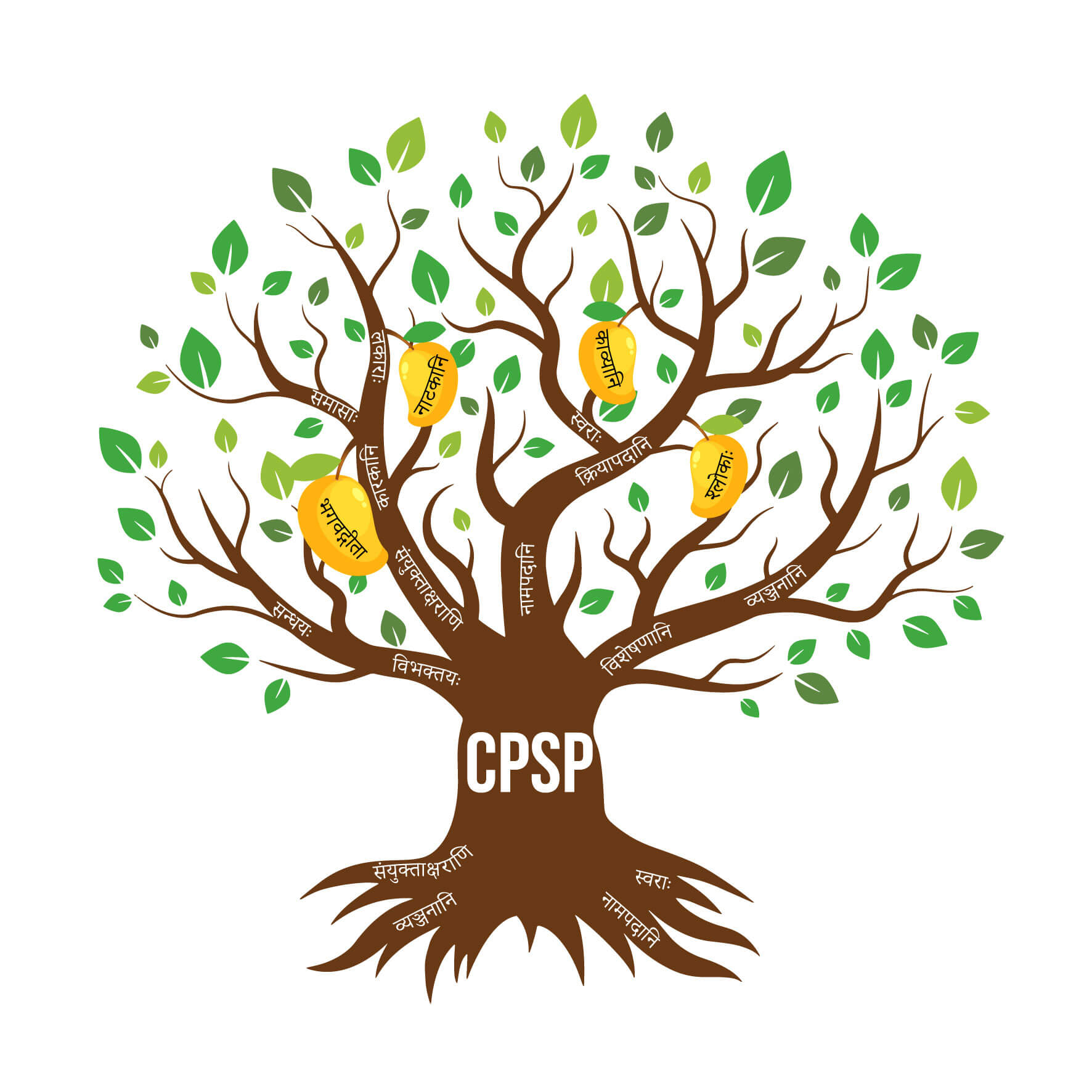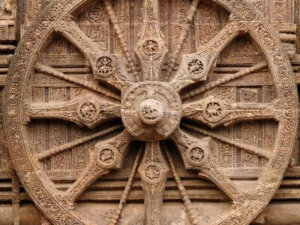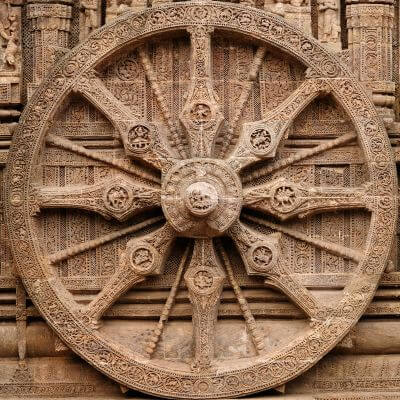Description
Certificate Program In Sanskrit Proficiency
Program Code:
CPSP
Course Codes:
0101 – 0404
Credit Hours:
24 Quarter-Credit-Hours
Duration:
4 years

Program Description
The Certificate Program in Sanskrit Proficiency (CPSP) offers a comprehensive and well-structured exploration of the Sanskrit language. It is specifically designed to guide beginner students, with no prior exposure to Saṃskṛtam, towards achieving proficiency in the language. By completing the program, students will gain the ability to recognize and comprehend Sanskrit words, unlocking a wide range of skills including listening, understanding, writing, speaking fluently, comprehension, grammar, and for those interested, recitation and singing as well.
The Program aims to foster a deep appreciation for the highly systematic nature of Saṃskṛtam. Mastering Sanskrit (or Saṃskṛtam) will empower students to directly access and engage with the vast collection of original texts, eliminating the need for translations or intermediaries. The Certificate Program in Sanskrit Proficiency (CPSP) serves as a strong foundation for students of all ages, starting from High School (ages 14+).
This four-year comprehensive program prepares students to pursue a Master of Arts in Sanskrit at HUA, opening up the world of Saṃskṛtam and allowing them to explore any field of their interest.
Program Learning Outcomes (PLOs)
At the completion of the program of study, students will be able to:
- Demonstrate proficiency in reading and writing in Devanāgarī script.
- Apply Saṃskṛtam vocabulary and grammar skillfully.
- Explain Saṃskṛtam texts in English, and vice-versa.
- Communicate in spoken and written Saṃskṛtam.
- Produce a variety of content in Saṃskṛtam.
At the completion of these 4 phases, students will have the option to take up further advanced studies in Sanskrit language through the Master of Arts Degree in Sanskrit at HUA.
Students will be able to participate in a “Higher Education” ecosystem that supports and enables advanced learning in Hindu studies as well as Sanskrit literary studies.
Video Testimonial

Who is this Program for?
The Sanskrit Proficiency Certificate Program is specifically designed for beginners aged 14 and above who have a strong passion for learning the Sanskrit language and delving into the rich texts and literature of the Hindu and Indic world, as well as its diverse derivative knowledge systems. No prior knowledge of Sanskrit is necessary, and the initial stage of instruction primarily utilizes English. As students progress in their proficiency with Sanskrit words or spoken Sanskrit, the instruction will gradually transition to the Sanskrit language, at a comfortable and manageable pace for the cohort.
Prerequisites for the Program:
The only prerequisite for the Certificate Program in Sanskrit Proficiency is that the student knows and understands English, as the medium of instruction, at least initially, is English. No prior knowledge of Sanskrit language is assumed for new students. Familiarity with the devanāgarii script is not a prerequisite as the first quarter of the program helps the student learn to read Sanskrit alphabets and make it easier to learn the Sanskrit language.
If a student has some proficiency in Sanskrit words or the Sanskrit language generally at the point of entry, an assessment will be done by the faculty to facilitate an entry for them at an appropriate phase of the course. However, the student may not earn the Program certificate if the total credit hours earned is less than 22.5. The student can earn a certificate of completion for that phase only.
How long will this program take?
The Program of Study for the Sanskrit language is divided into four consecutive phases over a period of 16 quarters or 4 years. Each phase with 4 quarters, of 1.5-Credit hours per quarter, adds up to 60 hours of instruction and 120 hours of self-study. The student will have to earn 24 credits to complete this program.
In the event that students need to take a break, it is recommended for them to complete at least one phase before temporarily pausing their studies. To earn the CPSP completion certificate, the student must earn a minimum of 22.5 credits.
Students are strongly encouraged to enroll at least in one phase of study and fully commit to it for its entire duration. Our experience has shown that taking individual courses without committing to the entire phase may not provide optimal benefits for the students. Therefore, it is not recommended and even discouraged to take courses on an à la carte basis.
Structure of the Program
The certificate program consists of a total of 24 credit hours of coursework. Students have the option to complete it in 4 consecutive years earning 6 credit hours per year. Alternatively, they can choose to enroll in phases and complete one phase at a time. To achieve the best outcome from the program, it is recommended that students complete all the phases consecutively without taking a break. To earn the Program completion certificate students must complete a minimum of 15 courses successfully.
About Sanskrit Language:
The word Sanskrit or ‘saṃs-kṛta’ means ‘completely – made’ and it signifies the Sanskrit language as one that is complete in terms of being able to convey precise and unambiguous contextual meaning. Rooted in a well understood etymology, the Sanskrit language provides a framework for communicating thought with deep meaning and simplicity. Because of its inherent perfect architecture, Sanskrit has remained largely unchanged over the centuries.
About Sanskrit Words:
Sanskrit words are formed with various combinations of vowels and consonants, together called akśarāṇi, based on a finite set of rules. Importantly, the sounds of each akśaram (syllable) is based on a particular placement combination of the tongue, back side of the mouth, lips and the out breath. Sanskrit words and the resulting Sanskrit language were originally used in spoken form.
About Spoken Sanskrit:
The original use case for the everyday Sanskrit language was spoken communication. This is a key reason why Saṃskṛtam never needed a particular script. Saṃskṛtam words and the resulting Saṃskṛtam language can therefore be written in any script, and devanāgari is the most commonly used script. While it may seem daunting initially, spoken Sanskrit skills can in fact be developed quickly.
The alphabets in the Sanskrit language make specific sounds based on the placement combination of the tongue, back side of the mouth, lips and the out breath. Combining these alphabets into Sanskrit words and their subsequent combination to make complete sentences result quite intuitively when the combination rules are understood correctly.
Certificate Program In Sanskrit Proficiency
Program Context:
Learning and mastering a new language brings immense joy. When that language happens to be Saṃskṛtam, the joy of learning is multi-fold, as it grants direct access to the key that unlocks the vibrant tapestry of the living Hindu civilization. It opens the doors to texts and narratives encompassing dharma, yoga, jñāna, art, music, dance, poetry, and the diverse cultural and spiritual traditions. Proficiency in Saṃskṛtam not only deepens our understanding of one of the oldest languages but also establishes a profound connection to the ancient texts of Hinduism.
By engaging directly with the primary texts ourselves, we can avoid the pitfalls of relying on inadequate translations and gain profound insights into the teachings and philosophies of Hinduism. Developing fluency in Saṃskṛtam empowers us to discern between accurate and flawed translations, contributing to the preservation and authenticity of these invaluable texts. Furthermore, the study of Saṃskṛtam nurtures confidence and clarity in our interpretations and representation of Hinduism, establishing a solid foundation of expertise and authority in the realm of primary texts.
X
Certificate Program In Sanskrit Proficiency
The tuition fee per credit hour for CPSP courses is $200. The total cost of the Certificate program with 24 credit hours is The total cost of the Certificate program with 24 credit hours is $ 4,800 plus a one time non-refundable administration fee of $100 and $240 towards the cost of books, making it a total of $ 5140.
However the following payment options are available:
- Pay upfront for the full 4-year Program: Total cost $3940.
- Pay by Phases for 4 year-long phases : Total cost $4640.
- Pay by Quarter for the full 4-year Program: Total cost $5140.
Payment Plan Options:
US Students:
- Pay in full for all four years – $3940
- Pay for the Beginner Phase – $1170
- Pay for the Intermediate Phase – $1177
- Pay for the Advanced Phase – $1166
- Pay for the Proficiency Phase – $1127
- Pay by Quarter for the Full Program – $5140
Non US Students:
- Pay in full for all four years – $3820
- Pay for the Beginner Phase – $1135
- Pay for the Intermediate Phase – $1139
- Pay for the Advanced Phase – $1133
- Pay for the Proficiency Phase – $1114
- Pay by Quarter for the Full Program – $5020
From: $300.00 every 3 months for 48 months and a $220.00 sign-up fee
Before you choose a payment plan, and get enrolled in the Certificate Program in Sanskrit Proficiency, please make sure that you have completed the following steps.
- Applied for the Program.
- Reviewed the enrollment agreement form.
- Determined your payment plan.
After all of the above steps have been completed, please choose a payment plan below and pay your fees.
Select a payment plan below (pricing includes the cost of books):
X
Tuition and Payment
The tuition fee per credit hour for CPSP courses is $200. The total cost of the Certificate program with 24 credit hours is The total cost of the Certificate program with 24 credit hours is $ 4,800 plus a one time non-refundable administration fee of $100 and $240 towards the cost of books, making it a total of $ 5140.
However the following payment options are available:
- Pay upfront for the full 4-year Program: Total cost $3940.
- Pay by Phases for 4 year-long phases : Total cost $4640.
- Pay by Quarter for the full 4-year Program: Total cost $5140
Payment Plan Options:
US Students:
- Pay in full for all four years
$3940 - Pay for the Beginner Phase
$1170 - Pay for the Intermediate Phase
$1177 - Pay for the Advanced Phase
$1166 - Pay for the Proficiency Phase
$1127 - Pay by Quarter for the Full Program
$5140
Non US Students
- Pay in full for all four years
$3820 - Pay for the Beginner Phase
$1135 - Pay for the Intermediate Phase
$1139 - Pay for the Advanced Phase
$1133 - Pay for the Proficiency Phase
$1114 - Pay by Quarter for the Full Program
$5020
X
FBL Examples
Example # 1:
Priya (a hypothetical student) is interested in learning more about her family’s ancestral lineage and in enhancing her knowledge and practice of yoga in India. She lives in the United States and is the mother of a young child, so she will not be able to stay at a Yoga Gurukulam for an extended period of time. Priya has located a particular site for her FBL, which meets the criteria. They understand her responsibilities and have told her that a one or two-week stay at the Gurukulam is sufficient; she is able to manage this. She will participate in online courses with the Gurukulam, before and after her stay and is already thinking about how she can make connections with her HUA coursework in Yoga Sutras of Patanjali and other Yoga related courses.
Example # 2:
Kevin (a hypothetical student) is a musician who has been drawn to the spiritual foundations of Bhakti music. He lives in the USA, and is part of a Performing Arts Orchestra, who has been dabbling with his own musical creations based on the Vedic teachings. He is able to visit India for an extended period of time, and designs a 3-month immersion experience for his FBL with a Partner institution in India, which specializes in Classical Indian Music. He is also simultaneously learning Sanskrit through HUA and will be working on developing a deeper appreciation of the lyrics and their meanings from within a Hindu spiritual context. He will be making connections between his HUA coursework on Sanskrit as well as in Hindu Philosophy with the compositions of the Bhakti saints of various genres through his FBL.
Example #3:
Darshana (a hypothetical student) is interested in understanding the Ashram experience more fully. She is able to spend a substantial amount of time at an Ashram in the United States. She combines that experience with a quick 3-week Ashram tour of India to Rishikesh, Coimbatore and Belur, where she is able to develop an immersive understanding of the Ashram experience across multiple Hindu traditions. Her FBL is managed through the relationship with the Ashram in the USA and is able to also incorporate the 3-week travel to India to visit and experience several Ashrams. Through these varied Ashram experiences, she is able to incorporate new practices in her own life, after experimenting briefly with multiple practices being offered at these various sites.

















